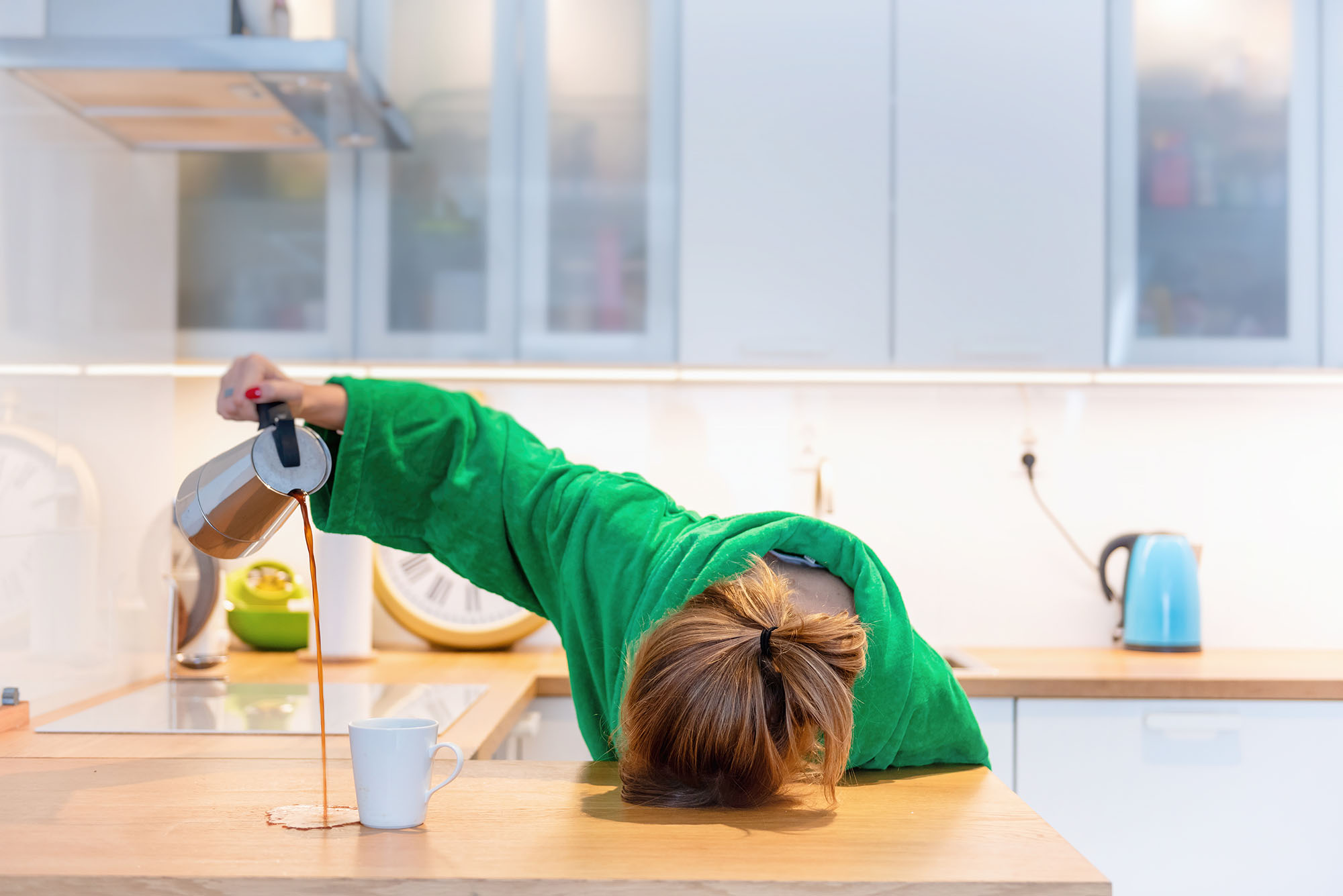What is Seasonal Affective Disorder?
Health | December 14, 2019
Now that winter has hit the US, it’s only a matter of time before things start to change. Not just in the weather, but in our moods, too. It’s not uncommon to start feeling quieter and more reserved. People start spending more time indoors, either because it’s too cold, raining, or snowing outside or because the season calls for the comfy, cozy retreat of our home. Whatever the reason may be, the less we spend outside, the more likely we are to experience a shift in our mental state. That, combined with less sunlight, also leads to even more changes in our mood. Often, people develop seasonal affective disorder (SAD), which the American Psychiatric Association (APA) defines as a, “…form of depression… The symptoms can be distressing and overwhelming and can interfere with daily functioning… About 5 percent of adults in the US experience SAD, and it typically lasts about 40% of the year. It is more common among women than men.” [1] Statistics show that up to 10 million Americans are affected by SAD between the ages of 18-30, with up to 6% requiring hospitalization. [2]
First, Know the Signs
How do you know you’re going through SAD? Pay attention and see if any of these symptoms apply to you:
- Low energy or fatigue
- Insomnia or trouble sleeping
- Oversleeping
- Not feeling well-rested despite getting plenty of sleep
- Anxiety
- Overeating or undereating
- Weight gain or weight loss
- Sudden changes in appetite
- Cravings (especially for high carb foods)
- Irritability
- Restlessness
- Withdrawal or not wanting to socialize (“hibernation mode”)
- Trouble concentrating
- Feeling worthless, hopeless, guilty, or sad (frequently)
- Suddenly losing interest in activities you used to enjoy
[1] [3]
According to the Mayo Clinic, “It’s normal to have some days when you feel down. But if you feel down for days at a time and you can’t get motivated to do activities you normally enjoy, see your doctor. This is especially important if your sleep patterns and appetite have changed, you to turn to alcohol for comfort or relaxation, or you feel hopeless or think about suicide.” [4]
With depression rates continuing to grow, it helps to be aware of the times when it is the most likely to occur. [4] And from that awareness comes a better understanding and treatment. If you suspect you may be experiencing SAD, please, don’t hesitate to get help! You are not alone. That being said, there is one crucial part of SAD to be aware about.
Find the Light
Because we typically spend less time out in the sun during fall and winter, we start to miss out on its benefits.
The first has to do with our internal “clock,” which is known as our circadian rhythm. Circadian rhythms are light-sensitive and respond both to sunlight and darkness. When there’s light, our body produces less melatonin, a hormone that regulates sleep. Once it’s dark, our body starts making more of it to help us fall asleep. [5] This is just one theory why experts believe that many people with SAD start to feel more tired and sleepy. With more darkness during the day and less light, the longer (and higher) melatonin stays.
The second thing that goes on is less Vitamin D. As I’m sure you know, the easiest way to get enough Vitamin D is through sunlight. However, not everyone will be outside even if they want to. If you happen to live in, say, New England or Alaska, then you’ll be getting the least amount of sunlight compared to California or Florida. And because of that, you’re at a higher risk of developing a deficiency in Vitamin D. If that’s the case, it might help to supplement regularly. And take advantage of the sun when it’s not hiding behind the clouds! Use it as an excuse to get outside, stretch your legs, and cut back on stress. (No kidding, since “ecotherapy” from being outside is great for mental health!) [3] [6]
A common treatment for SAD is light therapy (aka, phototherapy or heliotherapy). Light therapy involves the use of a type of artificial light that gives out a kind of wavelength that is similar to what you’d find outdoors from the sun. Typically, your healthcare practitioner will have you sitting in front of it while wearing protective goggles for about 30-60 minutes per day. Light therapy is also used for other conditions, such as jet lag, sleep disorders, dementia, and different types of depression. Experts recommend doing it even after SAD goes away to avoid relapse (although the amount of time and frequency can be adjusted). Although it’s generally safe, light therapy isn’t without its side effects, which include headaches, eyestrain, fatigue, irritability, and sleep imbalances. Experts recommend doing it earlier in the day to balance circadian rhythms and prevent the sleep/wake cycle from going off-center. [2] [7] [9]
Boost Your Mood
While tackling stress, anxiety, and SAD is easier said than done, it doesn’t hurt to focus on your mood. There are many ways to do this. Exercising every day, eating whole foods, taking care of your gut (more on gut health and mood here), listening to upbeat music, watching a funny movie or show, aromatherapy, hobbies, and having a good support group to reach out to. [1] [8] [9]
Over to You
Alright everyone, that about wraps up our talk on SAD. Mental health is a very personal issue, and not everyone responds the same way to treatment. Not to mention the fact that everyone experiences SAD differently! That’s why I strongly urge you to get help if your symptoms of SAD start to impact your health. Next, to that, adapt to the change in season. Yes, there is less sunlight, but that doesn’t mean you can’t “create” your own light from getting into the changes. Take the opportunity to use the fireplace and bundle up. Go out in the snow and play! I like to ski, but I know there are other activities like snowboarding, ice skating, and sledding. When you set your mind to it, anything is possible!
Let me know how you deal with SAD and what advice you would give to anyone who may be going through it.
Sources:
[1] https://www.psychiatry.org/patients-families/depression/seasonal-affective-disorder
[2] https://www.psychologytoday.com/us/conditions/seasonal-affective-disorder
[3] https://www.nimh.nih.gov/health/topics/seasonal-affective-disorder/index.shtml
[4] https://www.nimh.nih.gov/health/statistics/major-depression.shtml
[5] https://www.britannica.com/science/melatonin
[6] https://www.ncbi.nlm.nih.gov/pmc/articles/PMC6085576/
[7] https://www.mayoclinic.org/tests-procedures/light-therapy/about/pac-20384604
[8] https://www.ncbi.nlm.nih.gov/pmc/articles/PMC2077351/
[9] https://www.ncbi.nlm.nih.gov/pmc/articles/PMC4673349/















Private Member |
cherry hill, nj
I am reading this sitting under my light box. 🙂 For me, I feel it start the end of August. I make sure I eat well, work out and get some fresh air everyday. I still don’t feel as great as I do when it’s not winter, but it’s tolerable and I carry the mindset of “This, too, shall, pass.”
Private Member |
st. peter, minnesota, usa
I developed SAD last winter. The odd cycles of well below zero interspersed with above freezing made all of my trails dangerously icy. So instead of being outside daily with my dogs, my husband took care of their exercise. I ended up indoors too much.
This year I am taking steps to counteract it in advance (including buying one of those lights, adding over 30 houseplants, and a new gas heater that has beautiful actual fire in it to watch (and now I’m warm instead of bundling up inside). I also added a bunch of bird feeders outside of windows so I can see wildlife too. All of this should help, in addition to what Zuzka wrote. Except that I have a genetic mutation that makes it difficult for my body to uptake dietary vitamin D (plus a few other vitamins).